De-Graft visits a coastal region to explore wind farms - an example of the sustainable use of natural resources.
De-Graft: The UK is surrounded by water and there are many different ways for it to be enjoyed. Like surfing!
The coast is where the land meets the sea or ocean. Often coastal areas are popular places for tourists to visit, holiday, and have fun, like here in North Wales. Later locals Jayden and Eira are joining me to find out how coastal areas like this are also used to help produce renewable energy. But first, letÔÇÖs zoom out.
I'm here in a region, or principal area as itÔÇÖs known in Wales, called Denbighshire. Wherever you live in the UK youÔÇÖre never actually that far away from the coast. If you were to measure around all of the UKÔÇÖs coastline it would be thousands of kilometres long.
Coastal areas can look really different.
They can range from Northern IrelandÔÇÖs rugged Causeway coast with amazing ancient rock formationsÔÇŽ To a seaside resort like Brighton in the south of England. Some key coastal features youÔÇÖll find are beaches, sand dunes, cliffs, and caves.
Coasts are dynamic habitats which means they are constantly changing due to natural forces. There is continuous erosion, thatÔÇÖs where the water wears away at the land, and deposition, where the water drops off bits of rock and sand itÔÇÖs been carrying.
There are lots of ways to try and protect our coasts including hard sea defences, such as sea walls, or soft defences, such as planting vegetation.
As well as being places where people come to take in the scenery, coastal areas are also where people live and work. There are many different jobs in coastal areas, from those based on the beach like a lifeguard, to jobs based on the water like a fisherman, to jobs based on dry land like a caf├ę owner.
Another type of work in coastal areas is renewable energy projects such as offshore windfarms.
IÔÇÖm with locals Jayden and Eira at Gwynt Y Mor wind farm in North Wales.
Child: And then do I put one of these on?
De-Graft: Yeah, you do.
WeÔÇÖre making windmills to understand more about how wind turbines work.
Child: IÔÇÖve finished.
De-Graft: And outside weÔÇÖre getting a closer look at an old wind turbine blade.
What do you make of it?
Child: IÔÇÖve never seen one up close and its bigger than what I thought.
De-Graft: So wind turbines are quite similar to the windmill toys that weÔÇÖve got in front of us. What they are able to do is detect the direction of the wind coming in and rotate so the blades are in the best position to spin. So, see if you can turn your windmill toy so itÔÇÖs in the best position to catch the wind. You guys have got it. Mines managed to turn as well!
So why do you two think that the sea is especially windy?
Child: I think that itÔÇÖs because thereÔÇÖs more mountains and buildings and stuff blocking the wind and, on the sea, there are none.
De-Graft: Yep, youÔÇÖre absolutely right, there arenÔÇÖt really any obstacles in the sea. Now why do you think wind turbines might be good idea?
Child: Because of climate change we need wind farms to help produce energy.
De-Graft: Yeah, spot on! Wind turbines are a good source of renewable energy, which is better for the planet.
But what exactly is renewable energy? LetÔÇÖs hear from an expertÔÇŽ
Expert: Think of fossil fuels, like coal or gas, when you burn it, itÔÇÖs gone. It also emits smoke, and it emits CO2, which we know is warming the atmosphere as part of global warming. Whereas the wind, isnÔÇÖt there every day, but itÔÇÖs there most days and it will be there tomorrow, and it will be there the day after tomorrow, so itÔÇÖs renewable. It comes back and you can use it again.
De-Graft: OK, time to compare. Wind turbine blades are around 50 metres on average. ThatÔÇÖs nearly as tall as ItalyÔÇÖs tower of Pisa or the same length as 11 cars.
So, what does the coast nearest to you look like? What kind of features does it have? Zoom in and have a look for yourself.
Right guys, who can make their windmills turn the fastest?
Video summary
De-Graft is in on a beach in North Wales exploring coastal areas, including coastal industries.
Across the UK, coastal areas can look quite different - from Northern IrelandÔÇÖs rugged Causeway coast, to a busy seaside resort like Brighton in the south of England.
De-Graft explains some of the key features you can often find in coastal areas including beaches, sand dunes, cliffs, and caves. Coasts are dynamic habitats, which means they are constantly changing due to natural forces. There are different methods of protecting coastal areas such as hard defences like sea walls, and soft defences like planting vegetation.
The coast is also important when it comes to generating renewable energy, for example using wind turbines. De-Graft visits Gwynt Y Mor wind farm with locals Jayden and Eira. They get a close up look at an old wind turbine blade, and make windmill toys to help understand how wind turbines work.
Teacher Notes
Questions to consider:
- What is your favourite thing about the coast?
- What are some key features of coastal areas?
- What ways can people enjoy the coast? What coastal activities can you think of?
- How might locals feel about tourists who visit the coast?
- What kinds of jobs can you think of that people do in coastal areas?
- What does it mean when we say that coasts are ÔÇśdynamicÔÇÖ areas?
- Why might coastal areas need protection? What are some of the different ways we can protect our coasts?
- Would you like to live near the coast? Why/why not?
- What is renewable energy? How many different kinds do you know?
- Why is it good to have renewable energy sources like wind farms?
- What different opinions might people have about wind farms?
Suggested activities to further explore learning:
1. Coastal Road Trip
Ask pupils to imagine theyÔÇÖre going on a road trip around the UK that stops off at five different coastal resorts. Groups of younger children could gather information on one of the locations and older pupils might pick five coastal areas per group to study. What unique features does each one have? How are they similar? What physical processes can be found along the coast? What activities can you do at each destination? What sea defences do they have?
- Draw pictures or gather images from online of each coastal area to show what each place looks like, what local people and/or tourists might do around the area of coastline.
- Think about how youÔÇÖd travel from one destination to the next. What are the distances between the places? How long would it take to drive or get public transport? How could you make the road trip as environmentally friendly as possible? Maybe even use a map or atlas to plot your journey, and make an itinerary of what youÔÇÖd get up to at each destination.
2. Build your own coastal area
In small groups pupils use a sand tray with water and plasticine to build their own coastal areas with different features.
- Pupils can consider whether they want their coastline to have a beach area, rocks (perhaps with some erosion), maybe some wind turbines, or a caf├ę for tourists?
- Encourage pupils to ask questions like ÔÇśwhat do I think is missing from my nearest coastal area?ÔÇÖ or ÔÇśhow could I make my coastal area accessible for all?ÔÇÖOnce the coast is constructed perhaps a storm or hurricane might ÔÇśhitÔÇÖ the area and destroy elements of the coastlineÔÇŽ how do the children feel? What might the damage be? How could the coastal area be rebuilt or protected for the future?
Key terminology:
Beach ÔÇô a piece of land separating a body of water, such as the sea, from inland areas. A beach is usually made of sand or pebbles.
Coastal defences ÔÇô measures that are put in place to limit/stop the effects of erosion on the environment.
Carbon dioxide ÔÇô Otherwise known as CO2. ItÔÇÖs a greenhouse gas thatÔÇÖs linked to global warming.
Cliff ÔÇô a steep natural wall of rock.
Deposition ÔÇô when a river or water source drops off any of the material, such as rocks and sand, that it has been carrying.
Dynamic environment ÔÇô an environment that is constantly changing or moving.
Erosion ÔÇô the process of rock or soil being worn away by natural forces.
Fossil Fuels ÔÇô fossil fuels include oil, coal, and gas. They are formed over millions of years from the remains of plants and animals and when burned they can harm the environment.
Greenhouse gas ÔÇô gas that traps escaping heat from the earth and rather than releasing it into space, keeps our planet warm and contributes to global warming.
Groynes ÔÇô a type of coastal defence that stops sand being washed along and away from a beach.
Renewable energy ÔÇô a source of energy that doesnÔÇÖt run out and is naturally replenished such as wind, solar, or tidal.
Sand dunes ÔÇô a raised area or ridge of sand piled up by the wind.
Tourism ÔÇô the business generated in an area by people travelling to come and sightsee and explore.
Wind farm ÔÇô a group of wind turbines in one area used to generate energy.
Suitable for teaching geography at KS2 in England, Wales and Northern Ireland, and 2nd level in Scotland.
Food, farming and agriculture. video
Exploring farming and agriculture - a key UK industry. Includes arable, pastoral and mixed farming and examples of rural and urban farms.
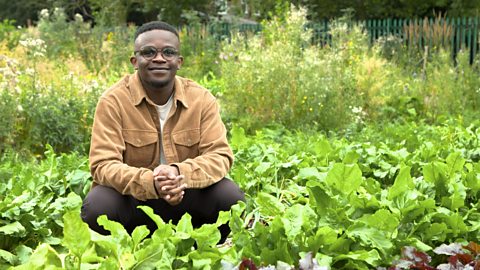
UK settlements and navigating using maps. video
Exploring the different types of settlement in the UK - including villages, towns and cities - and how to navigate using maps, including symbols, compass points and co-ordinates.
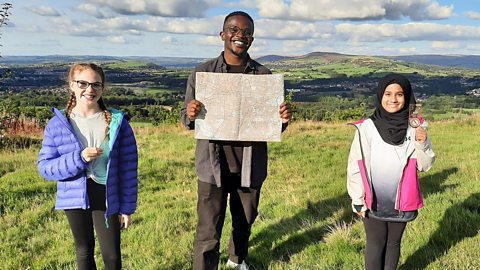
Urban settlements - living in a city or megacity. video
Exploring key aspects of cities and megacities - building use, population density, environmental impact and sustainable choices.

Rivers - the course of a river from source to mouth. video
Exploring the key aspects of rivers - the source, tributaries, streams, meanders, ox-bow lakes, river mouth and estuary.
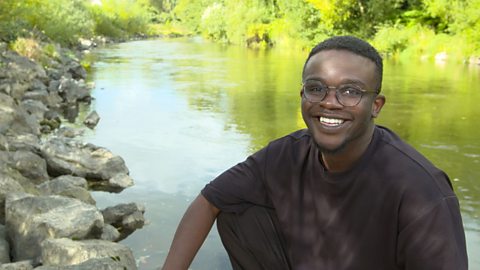
Mountains - how tectonic plates create mountain ranges. video
Exploring how tectonic plate movement creates mountains where the plates collide and single peaks formed by volcanoes.
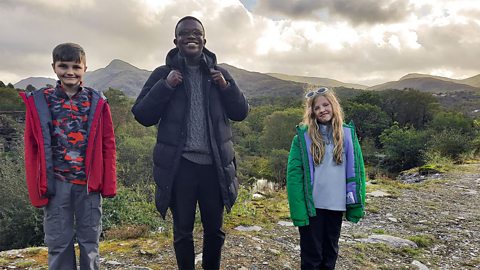
Lakes, lochs, reservoirs and the water cycle. video
Visiting Lake Windermere to consider lakes, lochs and reservoirs and their place in the water cycle.
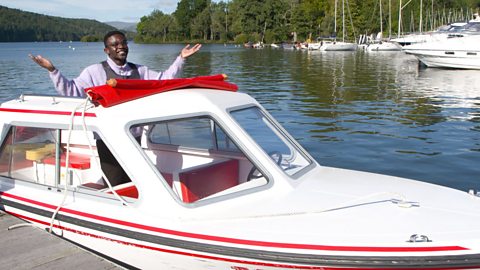
Forests - deciduous and coniferous woodland and biodivsity. video
Exploring a forest region in the Lake District to discover the rich biodiversity of woodland habitats.
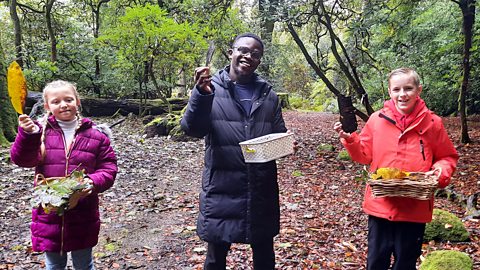
Shore, coast and ocean. video
Visiting a marine reserve in Scotland to discover the biodiverse habitat it offers, but also the importance of conservation.
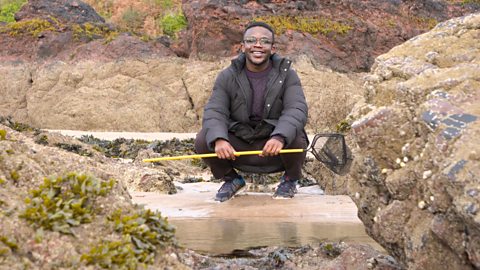
Peatlands, wetlands and the carbon cycle. video
Exploring the significance of peatland and wetland habitats to store water and absorb carbon or CO2.
